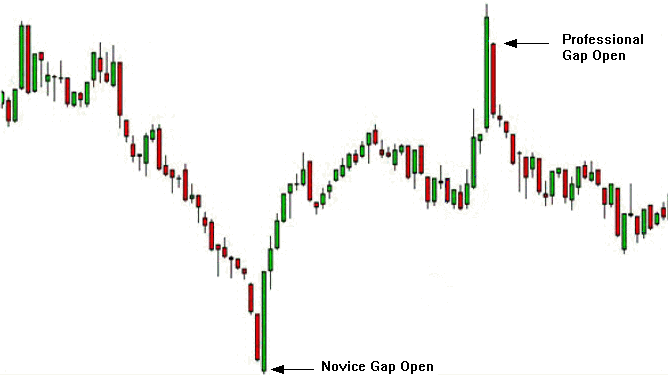
Gap Plays - A Three Tier Rating System
A "gap" is a term used to describe the difference between the prior day's 4:00 p.m. closing price and the current day's 9:30 a.m. opening price. It refers to the empty space that's left on the chart. There's an old saying, "The market abhors a vacuum; and it always fills the void." Many have interpreted this to mean that all gaps fill, sooner or later; and this tends to happen just often enough to fool most people into believing that this old saw is more often right then wrong. A gapping stock can actually do one of three things:
In this paper, I look at the technical factors (chart patterns) that can be used to establish a more dependable trading bias. But please note that even with a better, more rigorous technically based analysis, there is still no guarantee that the gap trade will go as expected, which is why we must always consider our risk exposure and stop-loss trigger. Note that gap plays are very interesting because of the extra degree of volatility often caused by the shock factor created by the unexpected move. But volatility is a two edged knife. So we only want to take gap trades that clearly put the odds in our favor (i.e., trades that are very likely to move as expected and also offer an appropriate 1R stop-loss strategy). So what causes gaps? Gaps are usually driven by news and/or significant commentary. They can also be caused by trading activity in other related markets (e.g., futures & ADRs). Gaps can kick-off a (a new breakout and breakdown) run or mark the end or reversal a run that is over-extended. The best gap plays occur when every one believes one thing (e.g., the gap will fill or the trend clear) and positioned accordingly, and then these folks are shocked to realize that the opposite is true (the gap will not fill or the trend has turned against their position), and as a result, the majority have to close or reverse their position which powers that big move forward. And this is why you must never scale into a gap trade and why you must have a very tight stop when you take a gap trade. A good gap trade should either go big in your favor or stop you out with a small loss!
Playing gaps is all about exploiting the surprise factor - we want the new trades from both old and new positions to both support the new intraday trend. For example, a stock has been trending down for three to five days. So there are a large number of open short positions all expecting the current down trend to continue. On the open, the stock gaps down to an extreme (a Novice Gap) or it could gap up in the prior down bar (a (Professional Gap). In both cases, those with open shorts are likely to buy to close their profitable positions (in the novice case) or in the professional case those shorts close to avoid further losses. Plus some of these traders and others are also likely to buy to open new long positions. All this buying, from both groups, will power the new intraday trend up. Let's take a closer (technical) look at these two (novice and professional) gaps.

When analyzing a gap pattern, it may help to color in the gap (the missing bar) and then analyze the daily chart pattern just like any other chart to establish your trading bias. Consider the slope of the 20 period simple moving average, where that moving average is in relation to the 8, 50, 200 period simple moving average, the prior pivot pattern and it's relationship to these moving averages to understand likely support and resistance areas and trending behavior, and finally consider relative strength - is this stock leading or lagging the broader market averages. This analysis should yield a clear trading bias (i.e., the odds favor a long or a short). If the analysis does not indicate a clear trading bias, move on and consider some other gapper. If the analysis does suggest a clear intraday bias, then use the following factors to rate the quality of the gap:
Here are some points to consider:
Based on the number of points earned above, use the following criteria to rate the quality of the gap trade and therefore your approach to the trade.
Here are some relevant weekly Trading Lessons: